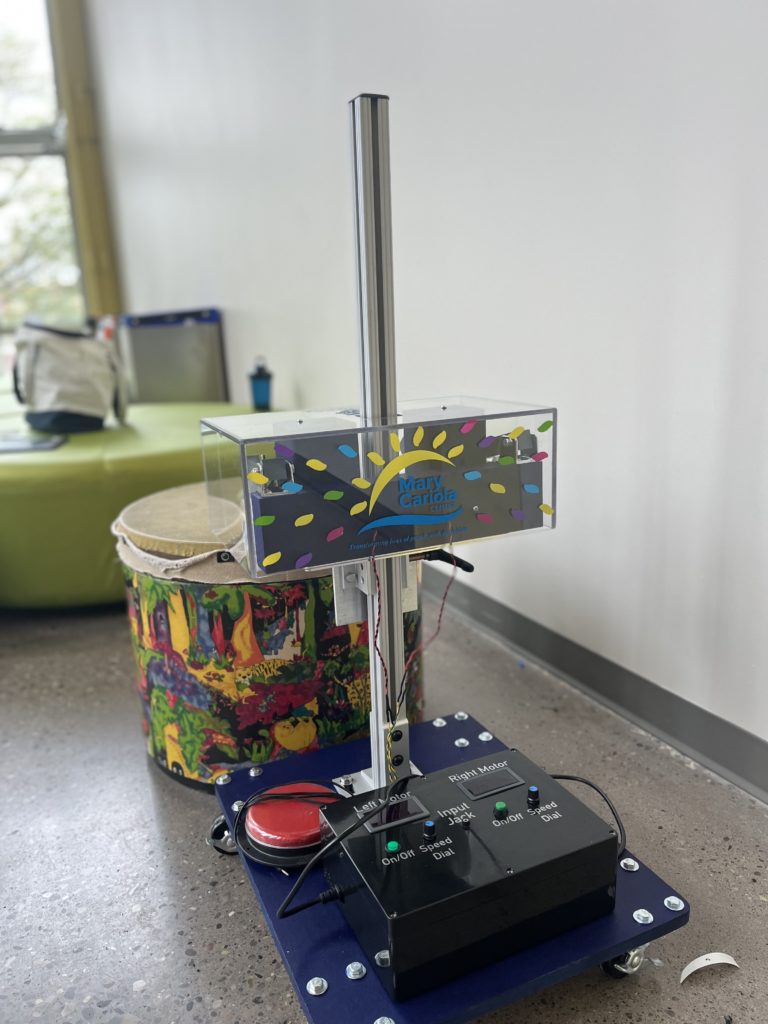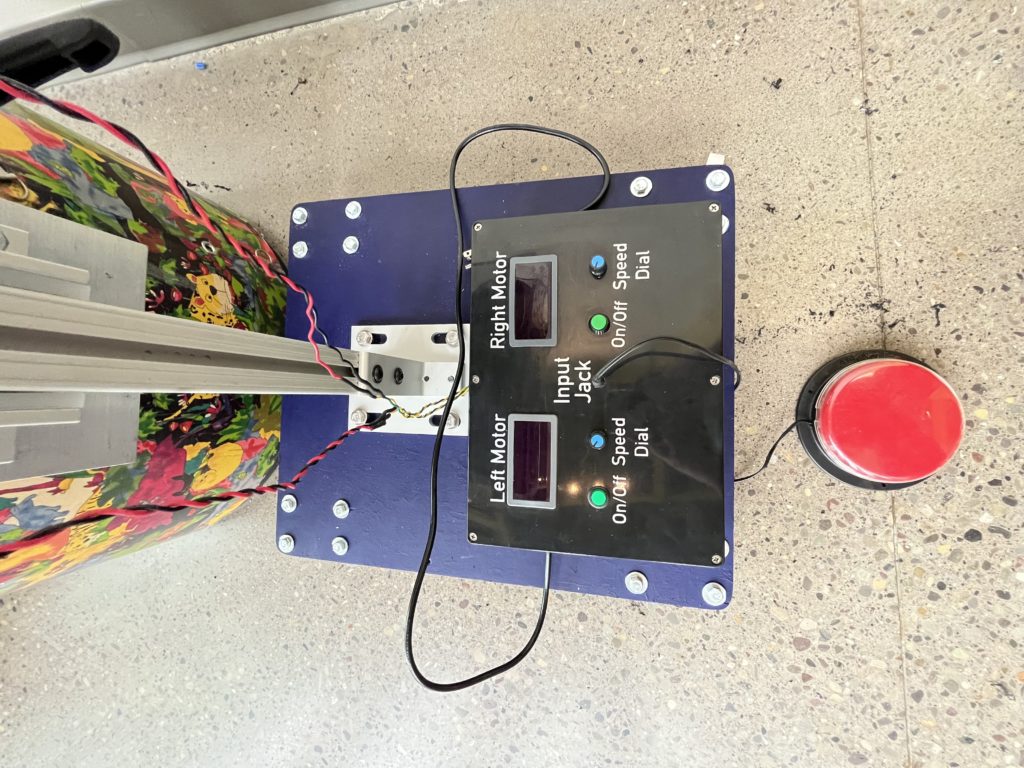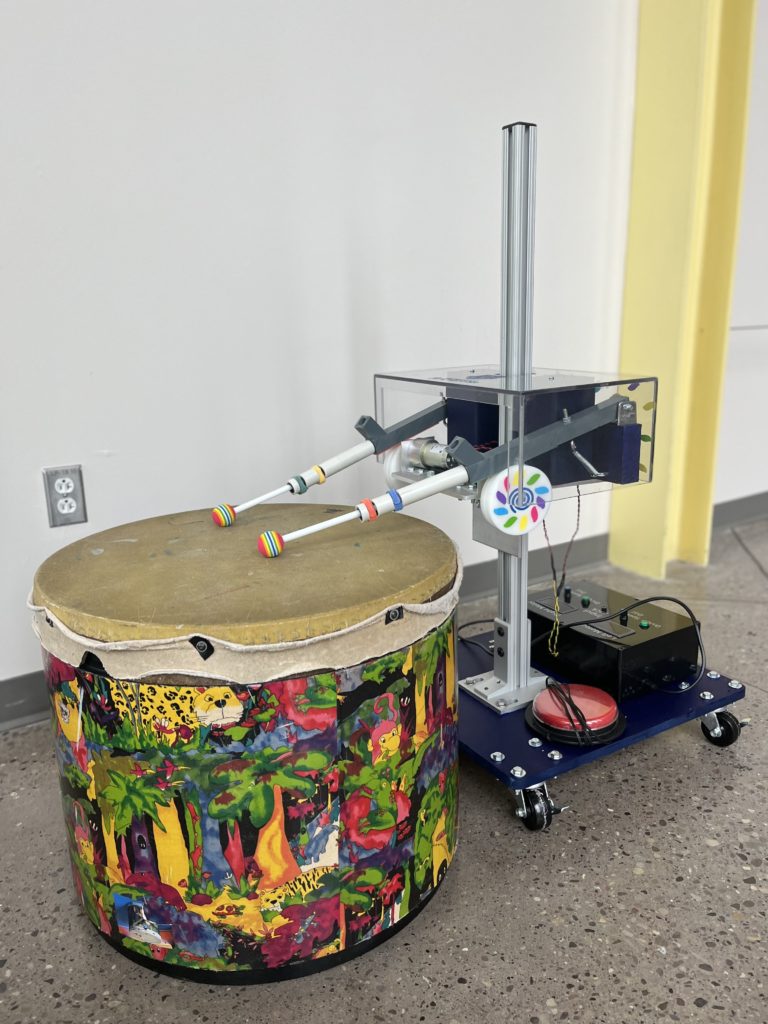Mechanical Drum Player
Students
Margaret Dix
Elizabeth Greenwood
Maggie Ozuna
Damon Yargeau
Mentors
Seth Werlin
Angela Mancini
Abstract: A mechanical drum player to provide handicapped children the ability to play the drums.
Stage 1: Problem Definition
ABOUT MARY CARIOLA
Mary Cariola is a local Rochester school that provides a variety of services to children with complex disabilities. They serve children from the ages 3 – 21 with speech therapy, occupational therapy, physical therapy, vision, nutrition, and what our group will focus on, music therapy. The school has 3 campuses that serve between 350-400 students at a time and manage 6 group homes for older children. Many of the students travel to be able to take advantage of Mary Cariola’s programs as they have students from 50 different New York school districts.



OUR PROJECT
Our team was assembled to work with Seth Werlin, an Occupational Therapist at Mary Cariola to create a device for physically disabled students to allow them better access to playing the drums. This device would allow the students access to a greater range of musical therapies and the healing nature of music.
Based on the problem defined above our team defined the requirements and specifications that our project needs to meet to be considered successful at solving the given problem.
Specifications
- Force on drum must be between 60 – 100 N
- Must be able to hold drumsticks of 0.25 – 0.625 in diameters
- The device must weigh less than 15 lbf
- The device must be able to play the drums with a tempo of 40 bpm and 150 bpm.
- Must have no pinch points for children’s fingers to get caught
Requirements
- Must be able to hold multiple diameter drumsticks/mallots
- Must be able to hit the drumstick against a drum to create sound
- Must be portable, can be moved to different drums
- Must have an 1/8 in. jack to be accessible to adaptive buttons
- Must play the drums when the adaptive button is pressed
- Must have variable tempo
- Must have two drumsticks that can be played at different tempos
- Must be safe to use around children

Stage 2: Initial Design Process
Base/Frame
Provide structure for the machine
- Set of legs or feet to provide a strong base
- Center column to hold the drumsticks and mechanisms at varying heights
Internal Electronics
Provide movement to the arms to create sound
- Set of batteries or ability to plug into the wall for power
- Two motors providing movement to drumsticks/arms
- Speed controllers to change the tempo of the drumsticks independently
Gripper/Arm
Hold the drumsticks as they move
- Arms that can hold varying diameters of drumsticks and stay secure while playing the drums
- Must recoil or stay connected to movement mechanism to avoid banging between arm and mechanism
Design Selection
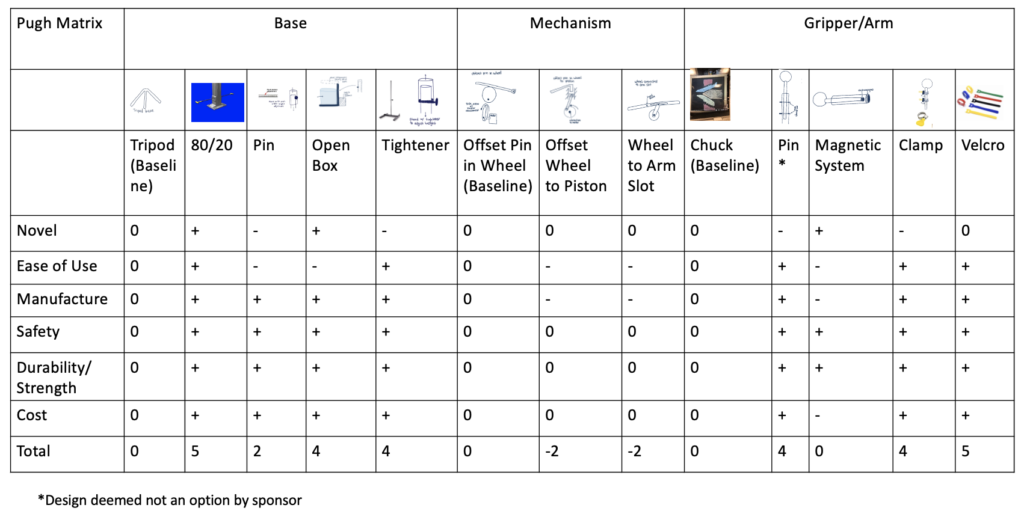
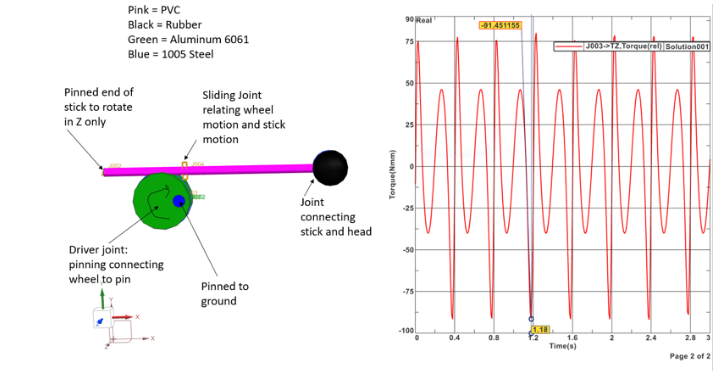
Stage 3: Prototyping/Analysis
The group used computer-aided analysis from NX to get an idea of what mechanisms and equipment would be needed. The image below on the left shows a computer model that was created in order to find the torque of the motor that would be needed to run the system. Following that discovery, to ensure the validity of the computer model, \the group acquired a similar motor and made a “Frankenstein Model” using lumber found around the shop. Since the 2″ x 4″ was heavier than the plastic the group would use, the group was able to confirm that this specific motor would work for this application.
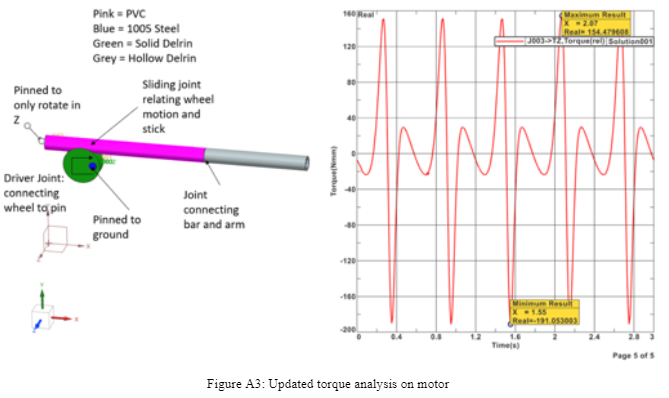
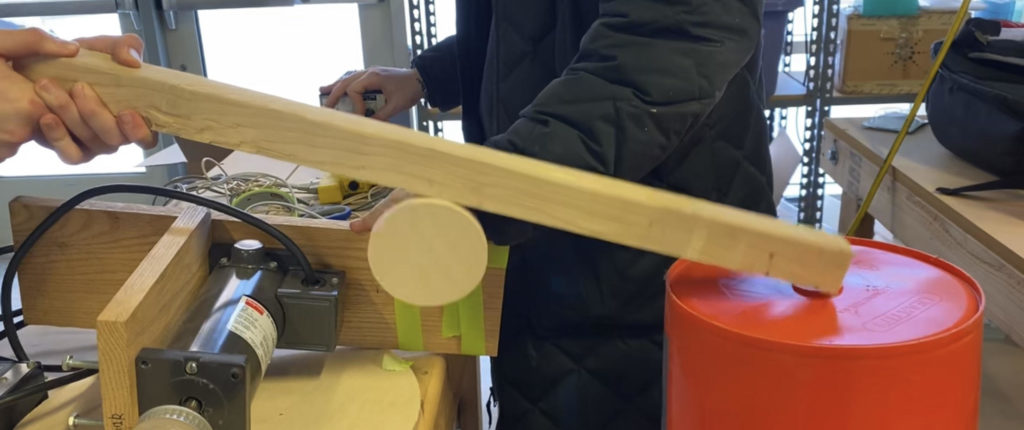
A tolerance analysis was done on the arm of the device with respect to its position on the cam. For the system to operate properly the arm must always be in contact with the cam. Based on the tolerance of the U-bracket, the arm bar riser, and the bolt used to attach, the possible angle of shift on the cam was found. The maximum shift angle found was used to find the distance off the cam the arm bar riser could shift. Since the distance found was less than the width of the arm bar riser, it was determined the angle shift would not cause issues.
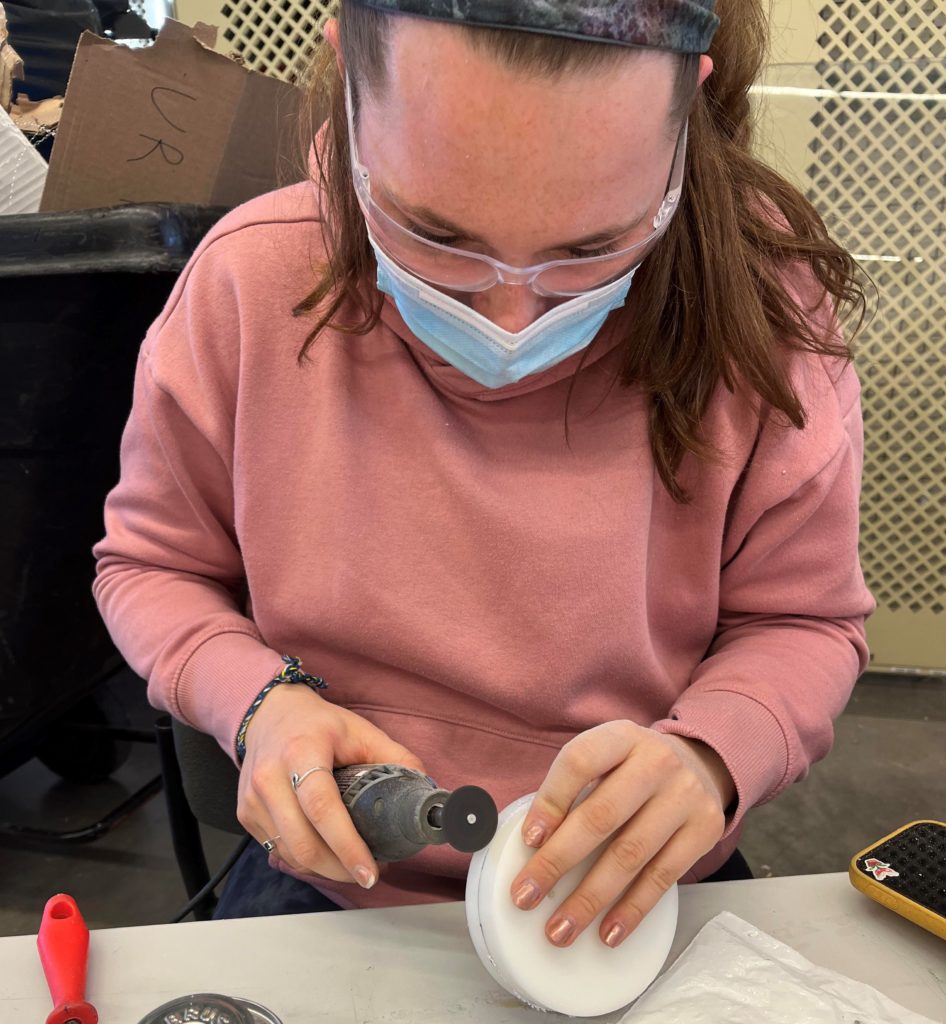
Stage 4: Manufacturing/ Assembly
Base/Frame
Provide structure for the machine
- Provide a strong base for the full system that is portable
- Center column to hold the drumsticks and mechanisms at varying heights
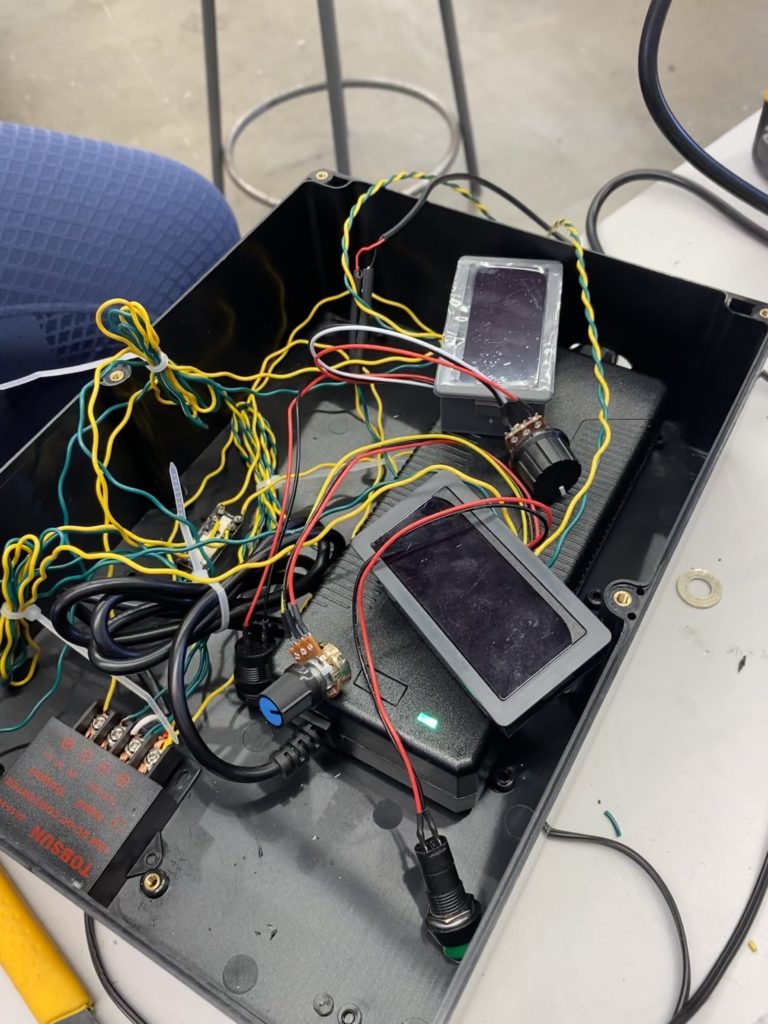
Internal Electronics
Provide movement to the arms to create sound
- Set of batteries or ability to plug into the wall for power
- Two motors providing movement to drumsticks/arms
- Speed controllers to change the tempo of the drumsticks independently
Gripper/Arm
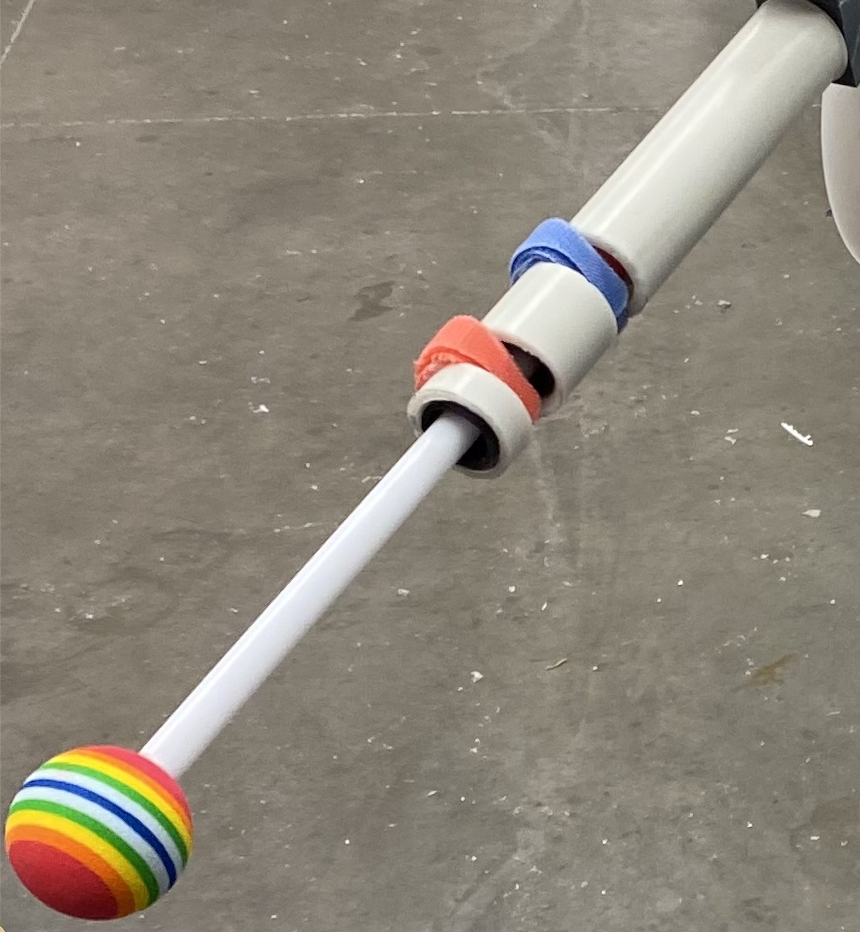
Hold the drumsticks as they move
- Arms that can hold varying diameters of drumsticks and stay secure while playing the drums
- Must recoil or stay connected to movement mechanism to avoid banging between arm and mechanism
- An attachment to allow for playing in both vertical and horizontal direction as seen in the picture below
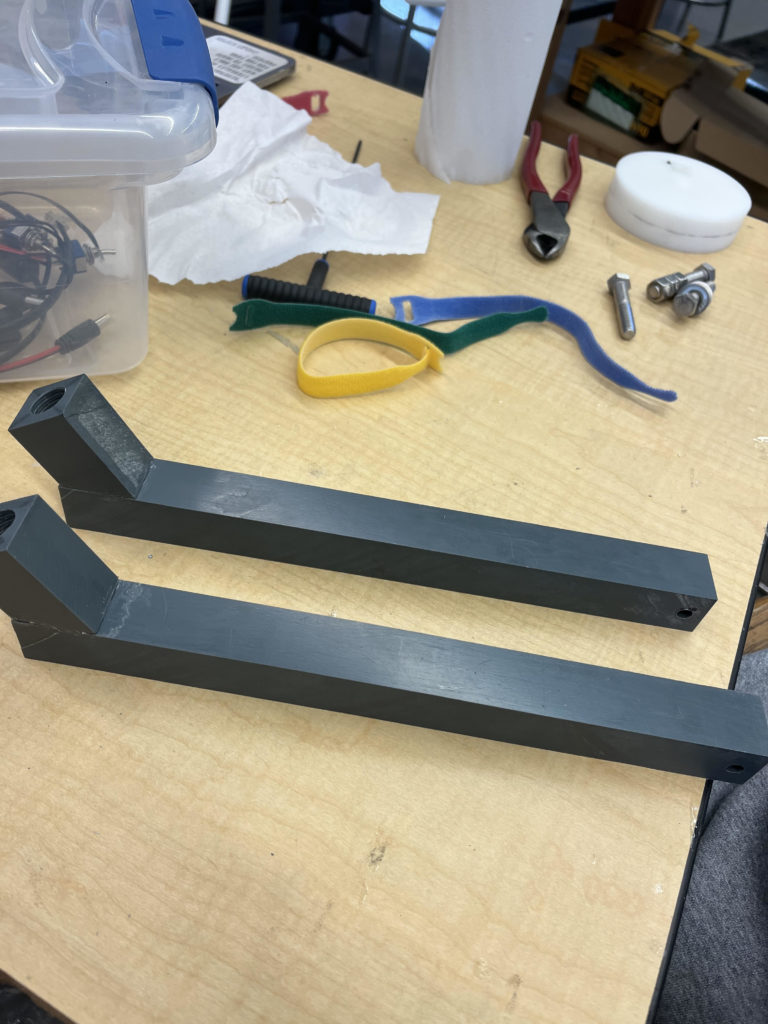
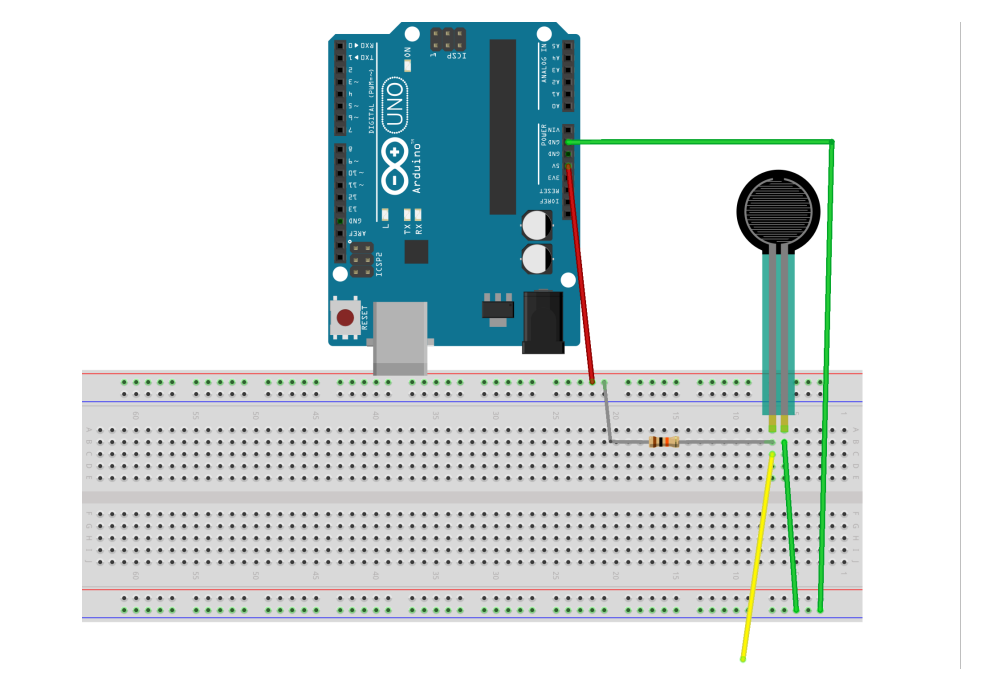
Stage 5: Testing/Changes
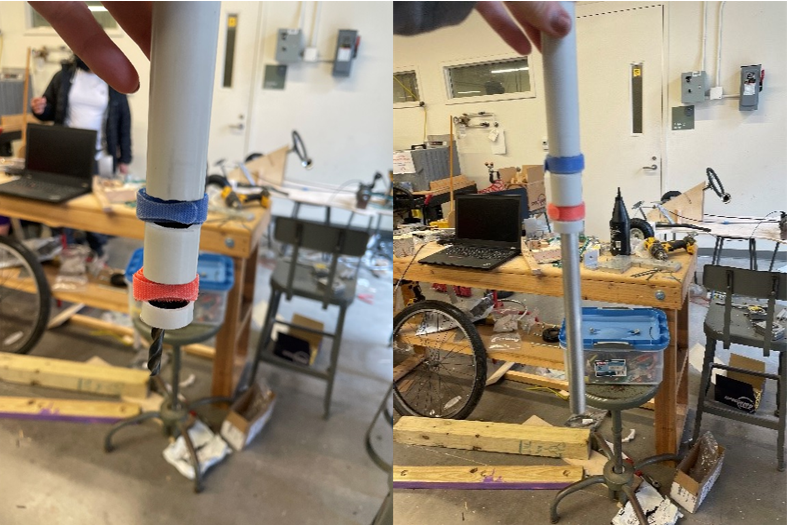
During this phase, the group took all of the fabricated parts and tested the device to ensure that it would pass the specifications that the group originally planned for. Some of the tests included measuring the force of each strike, recording the maximum and minimum beats per minute and as shown to the left, the ability to hold a wide variety of drum sticks. In addition to this, the team also tested the device at different speed settings. This allowed for the creation that would match the speed setting to the corresponding beats per minute to be included in the operations manual.
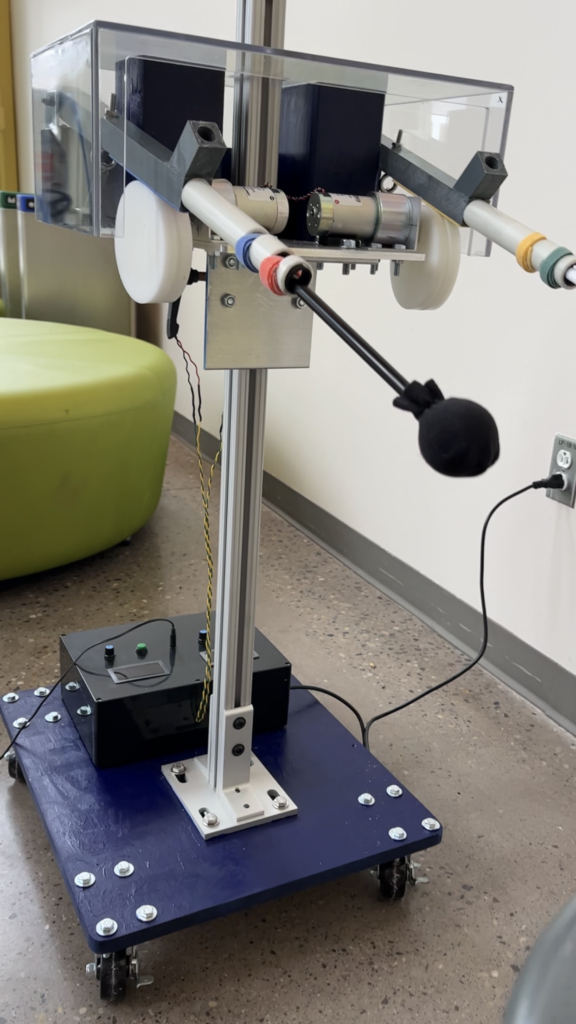
Stage 6: Final Product
At the conclusion of this project, the team was delighted to hear how how happy our sponsor was with their new device. This device can immediately be incorporated to their music rehabilitation facility. The team is excited to see the children of Mary Cariola’s reaction!
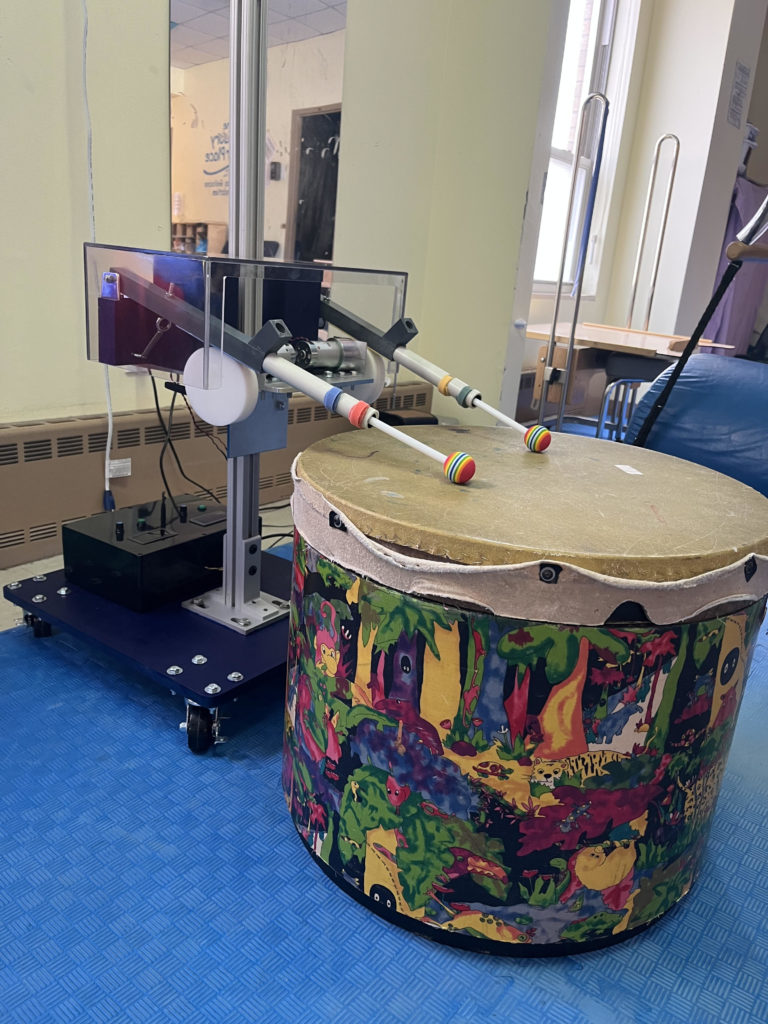
The final product can be seen being used in the Mary Cariola Center

